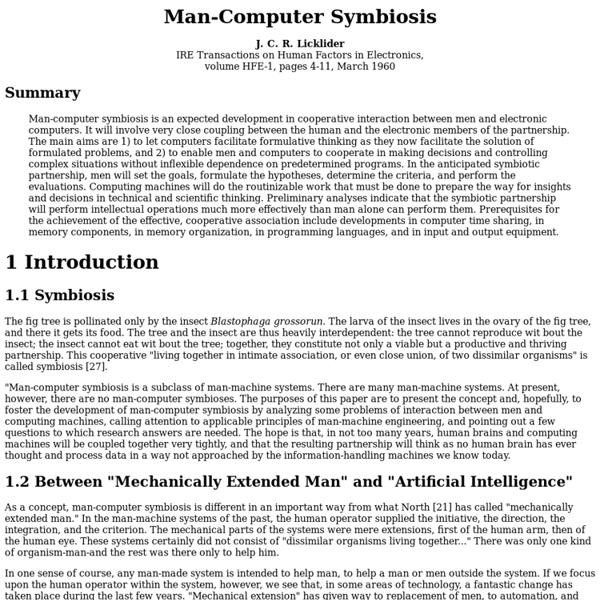Man-Computer Symbiosis

University of Alberta Dictionary of Cognitive Science: Collectiv
Collective intelligence is a term that refers to the computational abilities of a group of agents. With collective intelligence, a group is capable of accomplishing a task, or of solving an information processing problem, that is beyond the capabilities of an individual agent. Collective intelligence depends on more than mere numbers of agents. For a collective to be considered intelligent, the whole must be greater than the sum of its parts. This idea has been used to identify the presence of collective intelligence by relating the amount of work done by a collective to the number of agents in the collection (Beni & Wang, 1991). Collective intelligence is of interest in cognitive science because many colonies of social insects appear to exhibit this kind of intelligence, and this has inspired researchers to explore "porting" such processing to robot collectives. References: Beni, G., & Wang, J. (1991, April 9-11).
Related:
Related:



